Description
Macroeconomics Parkin 11th Edition Solutions Manual
Macroeconomics Parkin 11th Edition Solutions Manual
***THIS IS NOT THE ACTUAL BOOK. YOU ARE BUYING the Solution Manual in e-version of the following book***
Name: Macroeconomics
Author: Parkin
Edition: 11th
ISBN-10: 0133020258
Type: Solutions Manual
– The file contains solutions and questions to all chapters and all questions. All the files are carefully checked and accuracy is ensured.
– The file is either in .doc, .padf, excel, or zipped in the package and can easily be read on PCs and Macs.
– Delivery is INSTANT. You can download the files IMMEDIATELY once payment is done.
If you have any questions, please feel free to contact us. Our response is the fastest. All questions will always be answered in 6 hours., most of the time within 30mins
We also faced similar difficulities when we were students, and we understand how you feel.
But now, with the Macroeconomics Solution Manual, you will be able to
* Have your homework problems solved readily.
* Reduces the hassle and stress of your student life.
* Improve your studying and also get a better grade!
* Get prepared for examination questions.
*Can save you time and help you understand the material.
This is the quality of service we are providing and we hope to be your helper.
Delivery is in the next moment. Solution Manual is accurate.
Prepare to receive your Macroeconomics Solution Manual in the next moment.
If you have any questions, or would like a receive a sample chapter before your purchase, please contact us at inquiry@testbankcorp.com
Macroeconomics Solution Manual
Macroeconomics Parkin 11th Edition Solutions Manual ISBN: 0133020258
1 WHAT IS ECONOMICS?
Chapter
Answers to the Review Quiz
Page 2
1. List some examples of the scarcity that you face.
Examples of scarcity common to students include not enough income to afford both tuition and a nice car, not enough learning capacity to study for both an economics exam and a chemistry exam in one night, and not enough time to allow extensive studying and extensive socializing.
2. Find examples of scarcity in today’s headlines.
A headline in the Chicago Tribune on July 10, 2012 was “Parents Sue to Block Changes in Home care for Children.” This story discusses how the state of Illinois was trying to decrease home care on “technology dependent” ill children in order to “force … [them] out of their homes and into institutional care.” The story points out that the scarcity in-home nursing care had led to high costs, which the state was trying to decrease by moving the children into hospitals where skilled nursing care is more readily available.
3. Find an example of the distinction between microeconomics and macroeconomics in today’s headlines.
Microeconomics: On July 9, 2012 a headline in The Wall Street Journal was “Lenovo Keeps Production In-House.” This story covers a microeconomic topic because it discusses computer manufacturer Lenovo has decided to produce its own computers rather than out-source them to companies that specialize in their production. Macroeconomics: On July 9, 2012, a headline in The New York Times was “Obama Poised for New Fight with G.O.P. Over Tax Cuts.” This story covers a macroeconomic topic because it concerns taxes in the entire economy.
Page 9
1. Describe the broad facts about what, how, and for whom goods and services are produced.
What gets produced is significantly different today than in the past. Today the U.S. economy produces more services, such as medical operations, teaching, and hair styling, than goods, such as pizza, automobiles, and computers. How goods and services are produced is by businesses determining how the factors of production, land, labor, capital and entrepreneurship, are combined to make the goods and services we consume. Land includes all natural resources, both renewable natural resources such as wood, and nonrenewable natural resources such as natural gas. Labor’s quality depends on people’s human capital. In the U.S. economy, human capital obtained through schooling has increased over the years with far more people completing high school and attending college than in past years. Finally, for whom are goods and services to be produced depends on the way income is distributed to U.S. citizens. This distribution is not equal; the 20 percent of people with the lowest income earn about 5 percent of the nation’s total income while the 20 percent of people with the highest incomes earn about 50 percent of total income. On the average, men earn more than women, whites more than non-whites, and college graduates more than high school graduates.
2. Use headlines from the recent news to illustrate the potential for conflict between self-interest and the social interest.
One example of an issue concerns the size of drinks sold in New York City. Take the June 11, 2012 headline from the Houston Chronicle “NYC Proposes Ban on Large Sodas at Restaurants.” This story discusses Mayor Bloomberg’s intention to pass a law restricting sales in restaurants, movie theaters, and sports arenas from selling sodas in sizes larger than 16 fluid ounces. Mayor Bloomberg believes his action is in the social interest because “The percentage of the population that is obese is skyrocketing.” However soda drinkers, pursuing their self-interest disagree. One analyst said “Folks who want to buy Big Gulps, … a lot of those customers, you’re only going to be able to take it away from them by prying it out of their cold, dead hands.”
Page 11
1. Explain the idea of a tradeoff and think of three tradeoffs that you have made today.
A tradeoff reflects the point that when someone gets one thing, something else must be given up. What is given up is the opportunity cost of whatever is obtained. Three examples of tradeoffs that are common to students include: a) When a student sleeps in rather than going to his or her early morning economics class, the student trades off additional sleep for study time. The opportunity cost of the decision is a lower grade on the exam. b) When a student running late for class parks his or her car illegally, the student trades off saving time for the risk of a ticket. The potential opportunity cost of the decision is the goods and services that cannot be purchased if the student receives an expensive parking ticket. c) A student trades off higher income by spending time during the day working at a part-time job for less time spent at leisure time and study. The opportunity cost for the higher income is less leisure and lower grades in classes.
2. Explain what economists mean by rational choice and think of three choices that you’ve made today that are rational.
A rational choice is one that compares the costs and benefits of the different actions and then chooses the action that has the greatest benefit over cost for the person making the choice. Three rational choices made by students include: a) The choice to skip breakfast to go to class. In this case the benefit is the higher grade in the class and the cost is the breakfast forgone. b) The choice to stop talking with a friend on the phone and start studying for an impending exam. In this case the benefit is the resulting higher grade in the class and the cost is the conversation forgone. c) The choice to do laundry today rather than watch television. In this case the benefit is the fact the student will have clean clothes to wear and the cost is the loss of the entertainment the television show would have provided.
3. Explain why opportunity cost is the best forgone alternative and provide examples of some opportunity costs that you have faced today.
When a decision to undertake one activity is made, often many alternative activities are no longer possible. Often these activities are mutually exclusive so only the highest valued alternative is actually forgone. For instance, the decision to go to a student’s 8:30 AM class eliminates the possibility of sleeping in during the hour and of jogging during the hour. But in this case, it is impossible to both sleep in and to jog during the hour, so the opportunity cost cannot be both activities. What is lost is only the activity that otherwise would have been chosen—either sleeping in or jogging—which is whatever activity would have been chosen, that is, the most highly valued of the forgone alternatives. For students, attending class, doing homework, studying for a test are all activities with opportunity costs.
4. Explain what it means to choose at the margin and illustrate with three choices at the margin that you have made today.
Choosing at the margin means choosing to do a little more or a little less of some activity. Three common examples students encounter are: a) When a student faces a chemistry and an economics final exam in one day, the student must determine whether spending the last hour studying a little more chemistry or a little more economics will yield a better contribution (marginal benefit) to his or her overall GPA. b) A college student buying a computer must decide whether the marginal benefit of adding 1 GB of additional memory is worth the marginal cost of the additional memory. c) A student football fan with a choice of a cheap seat in the student bleachers located at the far end of the playing field or a more expensive seat located on the 30 yard line must determine whether the marginal benefit of watching the game from a better seat is worth the marginal cost of the higher ticket price.
5. Explain why choices respond to incentives and think of three incentives to which you have responded today.
People making rational decisions compare the marginal benefits of different actions to their marginal costs. Therefore people’s choices change when their incentives, that is the marginal benefit and/or marginal cost, of the choice changes. Just as everyone else, students respond to incentives; a) A student studies because of the incentives offered by grades. b) A student is more likely to attend a class if attendance is factored into the grade. c) A student might attend a meeting of a club if the student’s significant other is eager to attend the meeting.
Page 12
1. Distinguish between a positive statement and a normative statement and provide examples.
A positive statement is a description of how the world is. It is testable. A normative statement is a description of how the world ought to be. It is, by its very nature, not testable because there is no universally approved criterion by which the statement can be judged. “I will receive an A for this course,” is a positive statement made by an economics student—it might not be true, but it is testable. “I will receive a good grade for this course,” is a normative statement. Whether someone agrees with it depends on his or her interpretation of what makes for a “good” grade.
2. What is a model? Can you think of a model that you might use in your everyday life?
A model is a description of some aspect of the economic world. It includes only those features that are necessary to understand the issue under study. An economic model is designed to reflect those aspects of the world that are relevant to the user of the model and ignore the aspects that are irrelevant. A typical model is a GPS map. It reflects only those aspects of the real world that are relevant in assisting the user in reaching his or her destination and avoids using information irrelevant to travel.
3. How do economists try to disentangle cause and effect?
Economists use models to understand some aspect of the economic world. Testing the predictions of models makes it necessary to disentangle cause and effect. To overcome this problem, economists have three methods of testing their models: Using a natural experiment, using a statistical investigation, and using economic experiments. A natural experiment is a situation that arises in the ordinary course of life in which one factor being studied varies and the other factors are the same. This method allows the economist to focus on the effect from the factor that differs between the two situations. A statistical investigation looks for correlations between variables but then determining whether the correlation actually reflects causation can be difficult. An economic experiment puts people into decision making situations and then varies the relevant factors one at a time to determine each factor’s effect.
4. How is economics used as a policy tool?
Individuals, businesses, and governments use economics as a policy tool. Individuals use the economic ideas of marginal benefit and marginal cost when making decisions for such topics as attending college, paying cash or credit for a purchase, and working. Businesses also use the concepts of marginal benefit and marginal cost when making decisions about what to produce, how to produce, and even how many hours to stay open. Finally governments also use marginal benefit and marginal cost when deciding issues such as the level of property taxes, the amount to fund higher education, or the level of a tariff on Brazilian ethanol.
Answers to the Study Plan Problems and Applications
1. Apple Inc. decides to make iTunes freely available in unlimited quantities.
a. Does Apple’s decision change the incentives that people face?
Apple’s decision changes people’s incentives. For example, it increases people’s incentives to buy an iPod to take advantage of the newly “free” music available on iTunes.
b. Is Apple’s decision an example of a microeconomic or a macroeconomic issue?
Apple’s decision is a microeconomic decision because it affects a single company and a single market.
2. Which of the following pairs does not match?
a. Labor and wages
Labor earns wages, so this pair matches.
b. Land and rent
Land earns rent, so this pair matches.
c. Entrepreneurship and profit
Entrepreneurship earns profit, so this pair matches.
d. Capital and profit
Capital earns interest, so this pair does not match.
3. Explain how the following news headlines concern self-interest and the social interest.
a. Starbucks Expands in China
Starbucks’ expansion is a decision made by Starbucks to further Starbucks’ interest. Thus the decision is directly in Srarbucks’ self interest. The social interest is affected because Starbucks’ expansion will have an effect in China. For instance, more Chinese citizens might drink coffee rather than tea and fewer coffee shops run by Chinese firms might open.
b. McDonald’s Moves into Gourmet Coffee
McDonald’s decision to serve gourmet coffee is a decision made by McDonald’s to further McDonald’s interest. Thus the decision is directly in McDonald’s self interest. The social interest is affected because more people will drink coffee rather than other drinks such as sodas.
c. Food Must Be Labeled with Nutrition Data
The decision to require that food must be labeled with nutrition information is made in the social interest. This decision is not made by any one single firm and so does not (necessarily) reflect anyone’s self interest.
4. The night before an economics test, you decide to go to the movies instead of staying home and working your MyEconLab Study Plan. You get 50 percent on your test compared with the 70 percent that you normally score.
a. Did you face a tradeoff?
Yes, you faced a tradeoff. The tradeoff was between a higher test score and an evening with your friends at the movies.
b. What was the opportunity cost of your evening at the movies?
The opportunity cost of going to the movies is the fall in your grade. That is the 20 points forgone from choosing to see the movie rather than study.
5. Costs Soar for London Olympics
The regeneration of East London, the site of the 2012 Olympic Games, is set to add extra £1.5 billion to taxpayers’ bill.
Source: The Times, London, July 6, 2006
Is the cost of regenerating East London an opportunity cost of hosting the 2012 Olympic Games? Explain why or why not.
The regeneration of East London is an opportunity cost of hosting the 2012 Olympics if East London would not have been regenerated otherwise. However, if there were already plans underway to regenerate East London, then the cost is not an opportunity cost of hosting the Olympics because the cost would have been paid even if London did not host the Olympics.
6. Which of the following statements is positive, which is normative, and which can be tested?
a. The United States should cut its imports.
The statement is normative and cannot be tested.
b. China is the largest trading partner of the United States.
The statement is positive and can be tested.
c. If the price of antiretroviral drugs increases, HIV/AIDS sufferers will decrease their consumption of the drugs.
The statement is positive and can be tested.
Answers to Additional Problems and Applications
7. Hundreds Line up for 5 p.m. Ticket Giveaway
By noon, hundreds of Eminem fans had lined up for a chance to score free tickets to the concert.
Source: Detroit Free Press, May 18, 2009
When Eminem gave away tickets, what was free and what was scarce? Explain your answer.
The seats in the concert are scarce—there are only a limited number (1,500 as it happens) available. Also scarce is the time the enthusiastic fans spent in line to acquire the tickets. In addition, if the fans who scored tickets attended the concert rather than sell their “free” tickets, they incurred the opportunity cost of the foregone ticket price. So the concert was far from “free” for the concert-goers. The publicity that Eminem receives is free to him but the publicity used reporters’ scarce time to report on the lines for the tickets rather than reporting on other news worthy events.
8. How does the creation of a successful movie influence what, how, and for whom goods and services are produced?
The “what” question is affected in two ways. First, one good or service that is produced is the successful movie. Second, spinoffs (Iron Man II) and/or similar films likely will be created in the future. The “how” question is affected to the extent that movies use different production methods. Some movies, for instance, have a lot of special effects while other movies have few or none. The “for whom” question is influenced because those people who, as the result of the blockbuster movie, have higher incomes so that more goods and services are produced for them.
9. How does a successful movie illustrate self-interested choices that are also in the social interest?
The a successful movie increases the income of the people involved with the movie. Hence these people’s choices are driven largely by self interest. However the creation of a successful movie also increases the quantity of widely enjoyed entertainment. The amount of entertainment available in the economy increases which benefits society. So the choices the people made in their self interest also reflected choices made in the social interest.
10. Before starring in Iron Man, Robert Downey Jr. had appeared in 45 movies that grossed an average of $5 million on the opening weekend. In contrast, Iron Man grossed $102 million.
a. How do you expect the success of Iron Man to influence the opportunity cost of hiring Robert Downey Jr.?
The salary that must be paid to Robert Downey Jr. to appear in future movies increased because some of the success of Iron Man was attributed to Mr. Downey. As a result the opportunity cost to movie producers of hiring Mr. Downey increased.
b. How have the incentives for a movie producer to hire Robert Downey Jr. changed?
There are two effects on the incentives of producers to hire Mr. Downey. First, because the opportunity cost of hiring Mr. Downey increased, the incentive to hire him decreased. However because part of the success of Iron Man was attributed to Mr. Downey’s acting in the title role, producers expect that his acting will lead to increased success for future movies. This belief increases producers’ incentives to hire Mr. Downey.
11. What might be an incentive for you to take a class in summer school? List some of the benefits and costs involved in your decision. Would your choice be rational?
Early graduation, smaller class sizes, and/or retaining eligibility for a scholarship are examples of incentives that encourage taking summer classes. The benefits of taking summer classes might include early graduation, more personal attention from the instructor, retained eligibility for a scholarship, and increased knowledge about some aspect of the world. Costs potentially include forgone summer jobs or internships, less time to spend with friends, and additional tuition and other class-related expenses if the class I not one that would be taken otherwise. The choice is rational as long as the student determines that taking summer classes offers the highest benefit over cost for the use of his or time and efforts.
12. Look at today’s Wall Street Journal. What is the leading economic news story? With which of the big economic questions does it deal and what tradeoffs does it discuss or imply?
On July 10, 2012, the top economic news story discussed President Obama’s proposal to extend tax cuts for families earning less than $250,000 and, by not extending tax cuts for families earning more than $250,000, to raise taxes on families earning more than $250,000. This story involved the “for whom?” question because families paying lower taxes will be able to purchase more goods and services. Of course, families paying higher taxes will be able to purchase fewer goods and services.
The story implicitly illustrates a tradeoff: If taxes are raised on families earning more than $250,000, these families will have less income to spend on goods and services but the government will collect more tax revenue to spend on goods and services.
13. Provide two microeconomic statements and two macroeconomic statements. Classify your statements as positive or normative. Explain why.
Microeconomic statements are: Fewer deep water oil wells should be drilled in the Gulf of Mexico. If less oil is produced, the price of oil will rise. The first statement is normative because it relies on what the person thinks “should” be done. The second statement is positive because it is possible to test the effect of less oil being produced.
Macroeconomic statements are: The currently unemployment rate is too high. The current unemployment rate is higher for blacks than for whites. The first statement is normative because it depends on what is deemed “too high.” The second statement is positive because it can be checked to determine its validity.

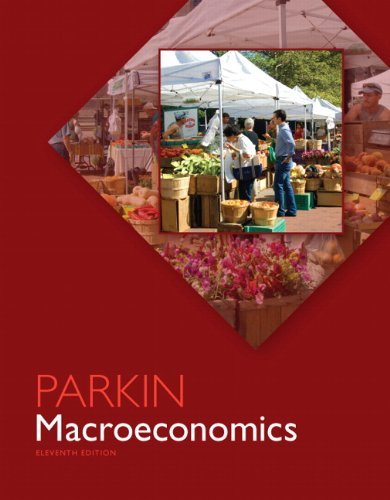
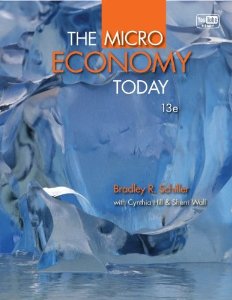
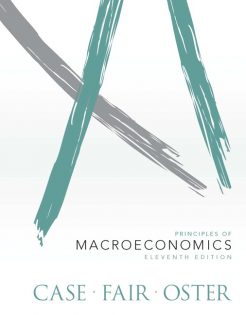
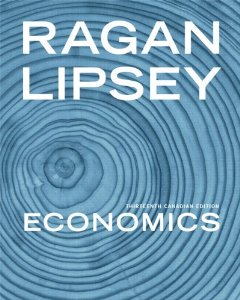
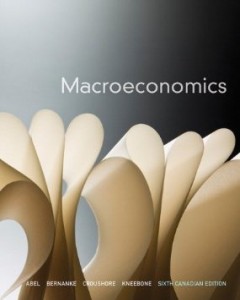

Reviews
There are no reviews yet.